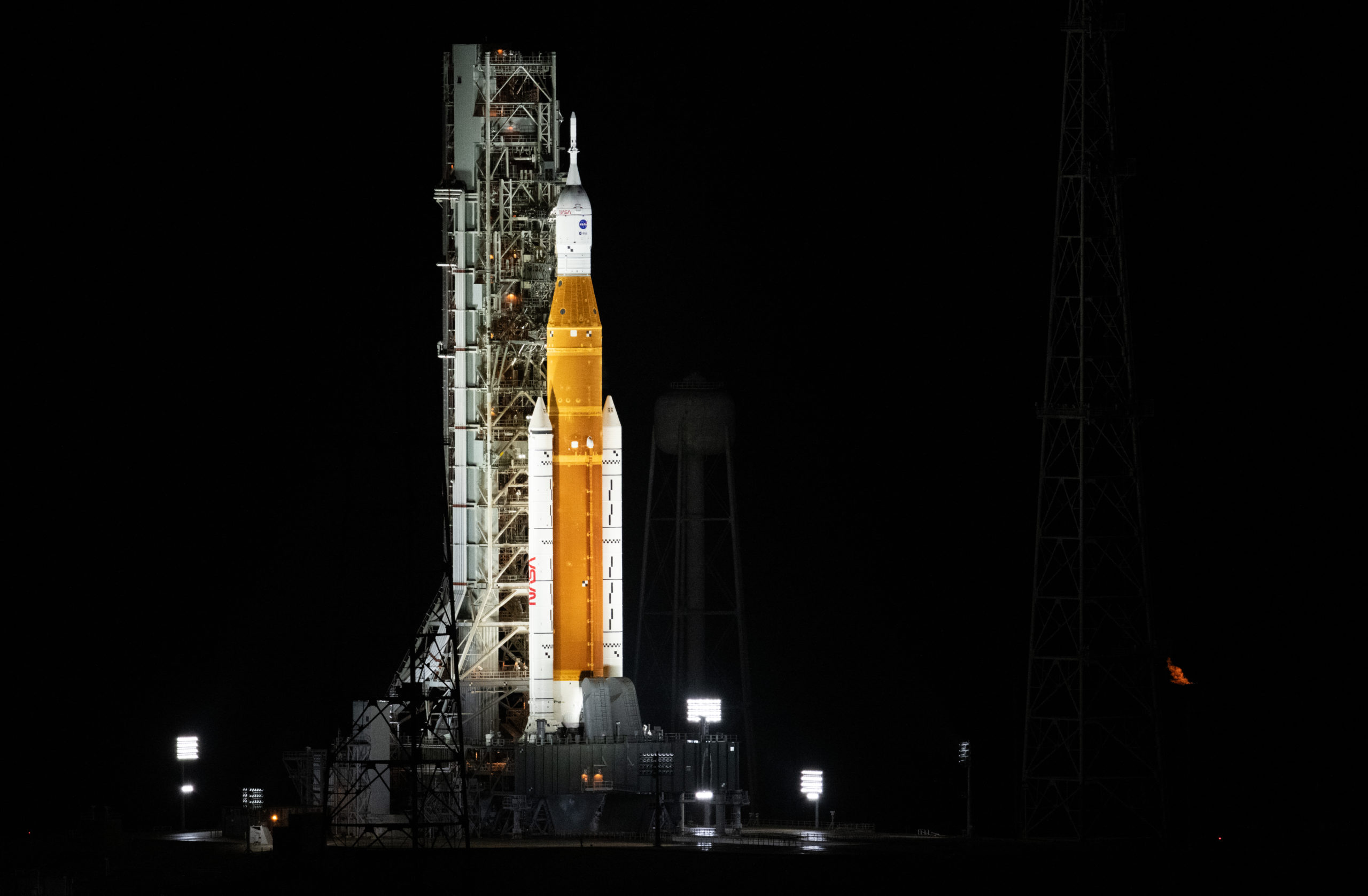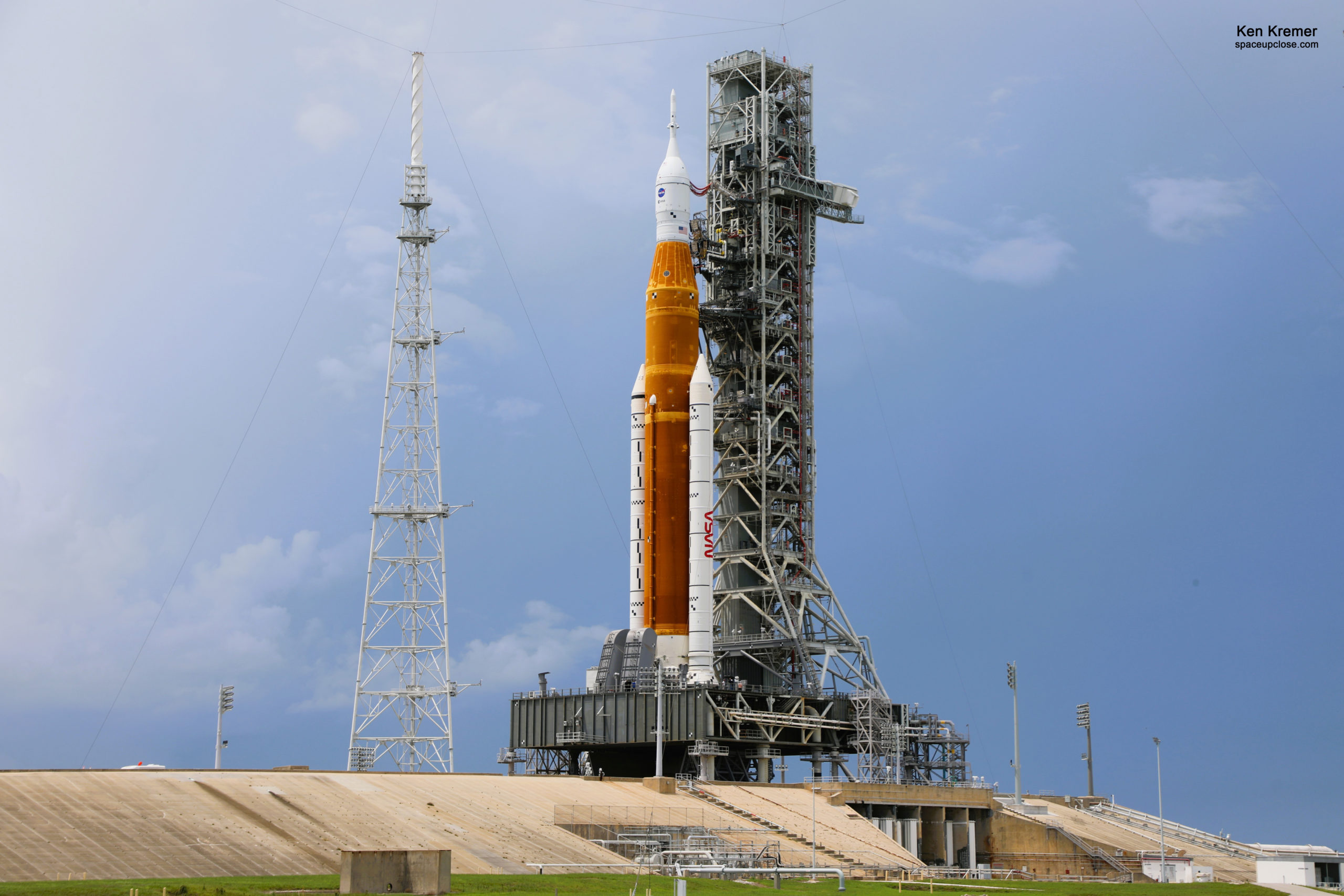
Following a scrub called on the first launch attempt of the Artemis I Moon rocket on Monday, Aug 29, NASA officials have reviewed their options and decided to make a second launch attempt this weekend.
Liftoff of the Artemis 1 mission is now slated for Saturday, Sept. 3 at 2:17 p.m. EDT (18:17 UTC) from the oceanfront Launch Complex 39B on NASA’s Kennedy Space Center on the first integrated test flight of NASA’s Orion spacecraft, Space Launch System (SLS) rocket, and the ground systems at the agency’s Kennedy Space Center in Florida.
The two-hour window for Artemis 1 runs until 4:17 p.m. EDT
The scrub was called primarily because one of the four RS-25 engines on the core stage, #3, apparently could not be chilled down to its required operating temperature of -420 degrees F.
Engine 3 had reached only about -380 degrees F, far from the target operating temperature which could have caused it to fail in flight. The other three RS-25 engines were trending downwards.
However, the chill-down issue may not have been caused by the rocket engine itself, but rather as a result of a faulty sensor still under evaluation.

The delay to Saturday gives the team additional time to investigate, evaluate and fix the multiple technical issues that forced Monday’s scrub at the T Minus 40-minute mark after a lengthy hold.
The Space Launch System rocket and Orion spacecraft remained in a safe and stable configuration and the liquid hydrogen and liquid oxygen fuels were successfully detanked.
The NASA team is also hoping for better weather on Saturday for launch of the 322-foot tall stack integrated of NASA’s Space Launch System (SLS) rocket and Orion crew capsule
Local officials also expect that a weekend launch over the Labor Day holiday could double the already massive crowd of spectators expected to be in the hundreds of thousands.
Indeed meteorologists with the U.S. Space Force Space Launch Delta 45 predict 60% favorable weather conditions, improving throughout the window for Saturday – a significant improvement of the only 40% favorable conditions initially forecast.

NASA officials waved off the Artemis 1 launch attempt on Aug, 29 because of a combination of poor weather and multiple technical issues that left insufficient time to institute fixes.
Despite a favorable weather outlook, the weather was red almost the entire window and would have forced a scrub even if the rocket had been ready with no technical show stoppers.
The Space Launch System’s four RS-25 engines in the core stage must be thermally conditioned before super cold propellant begins flowing through them for liftoff.
“Launch controllers condition them by increasing the pressure on the core stage liquid hydrogen tank to route, or “bleed” as it is often called, a portion of the approximately minus 423 F liquid hydrogen to the engines. Managers suspect the issue, seen on engine 3, is unlikely to be the result of a problem with the engine itself,” said NASA.
During the countdown, launch controllers worked through several additional issues, including storms and lightning strikes in the area around midnight, and later, that delayed the start of propellant loading operations by a full hour.



